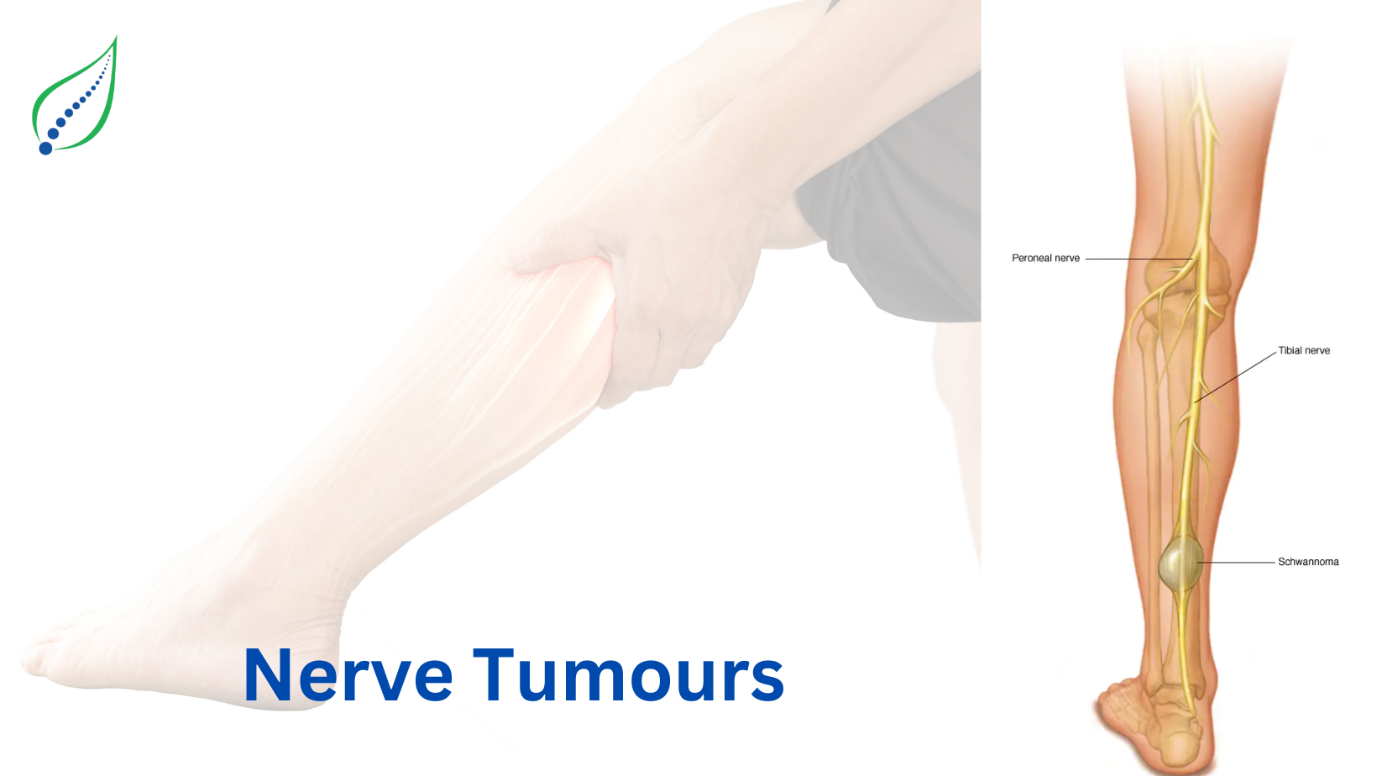Nerve Tumour
Nerve tumours, also known as peripheral nerve sheath tumours, are abnormal growths in the sheath, the protective membrane that surrounds peripheral nerves. The peripheral and central neurological systems may be impacted by these tumours, which can be either benign (non-cancerous) or malignant (cancerous).
Nerves are tissue strands that function to transmit signals from the brain to the rest of the body. The muscles that enable you to move, blink, swallow, pick things up, and do other tasks are controlled by peripheral nerves. Peripheral nerve tumours can cause symptoms by pressing surrounding nerves, blood vessels, or tissue,s or by directly affecting the primary nerve.
Types of Nerve tumours
Schwannomas: These are benign, slowly developing tumours that arise from Schwann cells, which create the myelin coating that surrounds nerve fibres. They are enclosed by a membrane, which is known as encapsulation. In adults, it is the most prevalent kind of benign peripheral nerve tumour. It can happen at any age and in any part of your body. Usually, a schwannoma originates from a single bundle (fascicle) inside the main nerve, which causes the remainder of the nerve to shift. Larger schwannomas damage more fascicles, which makes excision more challenging.
Neurofibromas: Non-encapsulated tumours that infiltrate between nerve bundles and affect several tissue types, including Schwann cells, within the nerve sheath. Neurofibromas can be plexiform (complex and containing several nerve bundles), diffuse (growing in a greater area of skin), or localized (appearing as lumps or nodules). While plexiform neurofibromas might be more complicated and possibly deformative, localized neurofibromas can be benign.
Acoustic neuroma: A noncancerous tumour called an acoustic neuroma forms on the major nerve that connects the inner ear to the brain. The vestibular nerve is the name given to this nerve. Hearing and balance are directly impacted by the nerve's branches. Hearing loss, ringing in the ears, and balance issues can all be symptoms of pressure from an acoustic neuroma. Vestibular schwannoma is another term for an acoustic neuroma. Additionally, the tumour may exert pressure on the facial nerve, which controls facial muscles, and the trigeminal nerve, which controls sensation. Acoustic neuromas can potentially impact brain structures or blood vessels.
MPNSTs, or malignant peripheral nerve sheath tumours: Rare malignancies that originate in the nerve lining are known as malignant peripheral nerve sheath tumours. These malignancies develop in the peripheral nerves, which are the nerves that leave the spinal cord and go throughout the body. Neurofibrosarcomas were the previous name for malignant tumours of the peripheral nerve sheaths.
Anywhere in the body, malignant tumours of the peripheral nerve sheath can occur. The deep tissues of the arms, legs, and trunk are where they are most common. Where they appear, they usually result in weakness and pain. They may also result in a developing mass or lump. These are more aggressive malignant tumours that may need to be treated with chemotherapy, radiation, and surgery.
Symptoms: The location and size of the tumour determine the symptoms, which may include:
- bulge or lump beneath the skin
- Numbness, tingling, or pain
- Weakness or lack of function of muscles
- Trouble with balance
- Sometimes there are no symptoms at all.
Diagnosis: A physical or neurological examination, medical history, and imaging tests like CT (Computerized tomography) or MRI (Magnetic resonance imaging) scans, EMG (Electromyogram), Nerve conduction study, Tumour biopsy, and Nerve biopsy to see the tumour are usually used in the diagnosis process.
Treatment: The nature and severity of nerve sheath tumours determine how they should be treated. Possible choices include:
Benign peripheral nerve sheath tumours: Peripheral nerve sheath tumours are often treated with continuous monitoring for asymptomatic or symptomatic tumours, incidental tumours, or slow-growing tumours. Whenever possible and when needed, a thorough surgical excision of peripheral tumours is usually performed.
Malignant nerve sheath tumours: Malignant spinal nerve sheath tumours are currently best treated by complete surgical excision. In intermediate and high-grade tumours, post-surgical radiation has demonstrated modest potential in enhancing recurrence-free survival. Chemotherapy for malignant spinal nerve sheath tumours has produced inconsistent results, and it is usually reserved for individuals with advanced or metastatic disease or when surgery is not an option.




